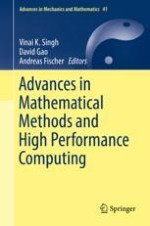2019 | OriginalPaper | Buchkapitel
The Effect of Toxin and Human Impact on Marine Ecosystem
verfasst von : S. Chakraborty, S. Pal
Erschienen in: Advances in Mathematical Methods and High Performance Computing
Aktivieren Sie unsere intelligente Suche, um passende Fachinhalte oder Patente zu finden.
Wählen Sie Textabschnitte aus um mit Künstlicher Intelligenz passenden Patente zu finden. powered by
Markieren Sie Textabschnitte, um KI-gestützt weitere passende Inhalte zu finden. powered by
